Berkeley Moynihan
Berkeley George Andrew Moynihan, Lord Moynihan of Leeds (1865 – 1936) was an English General surgeon.
Moynihan was regarded as an authority on abdominal surgery, published widely and drew many students to learn under him.
Moynihan pursued interests in both the medical and military sectors, obtaining military positions including Chairman of the Army Advisory Board and major-general, and medical positions including professor of clinical surgery at the University of Leeds and president of the Council of the Royal College of Surgeons of England.
Eponymously associated with the Moynihan sign (1905), an adaptation of Murphy’s sign, a method used to differentiate pain in the right upper quadrant.
Biography
- Born on October 2, 1865 in Malta
- 1867 – Moved from Malta to Leeds, Yorkshire with his mother after the death of his father Captain Andrew Moynihan, VC.
- 1875-1881 Educated at the Blue Coat School, London
- 1881-1883 Educated at the Royal Navy School, Eltham
- 1887 – Graduated MB, University of London
- 1890 – Fellow of the Royal College of Surgeons of England (FRCS)
- 1893 – Master of Surgery, awarded the gold medal
- 1896 – Assistant surgeon to Leeds General Infirmary
- 1899 – Arris and Gale lecturer, examiner in anatomy at Royal College of Surgeons of England
- 1906 – Surgeon to Leeds General Infirmary
- 1909-1927 Professor of clinical surgery at University of Leeds
- 1912 – Knight Bachelor (KB) bestowing the title ‘Sir’ and the post-nominal ‘Kt’
- 1914-1918 World War One, held rank of major à la suite, was attached to the 2nd Northern General Hospital of the Territorial RAMC. Upon demobilisation, held rank of major-general (1919)
- 1917 – Companion of the Order of the Bath (CB)
- 1918 – Knight Commander of the Order of St Michael & St George (KCMG)
- 1922 – Baronet of Carr Manor
- 1926 – 1931 President of the Royal College of Surgeons, England
- 1927 – Consulting surgeon to Leeds General Infirmary; Hunterian Orator
- 1929 – Raised to the peerage as Baron Moynihan, of Leeds
- Died on September 7, 1936 in Leeds, England
Whitehall, March 21, 1929: The KING has been pleased, by Letters Patent under the Great Seal of the Realm, bearing date the 19th instant, to confer the dignity of a Baron of the United Kingdom upon Sir Berkeley George Andrew Moynihan, Baronet, K.C.M.G., C.B., and the heirs male of his body lawfully begotten, by the name, style and title of Baron Moynihan, of Leeds in the County of York.
The London Gazette, 1929
Medical Eponyms
Moynihan sign (1905)
Moynihan acknowledged J.B. Murphy’s 1903 description of right upper quadrant interrogation in the upright patient with fingers gripped under the lower right anterior costal margin. He also took into account Bernhard Naunyn’s 1896 description of right upper quadrant examination on inspiration. [* aka Moynihan’s modification of Murphy’s sign]
I have found the simplest method of eliciting the pressure signs to be this: While the surgeon sits on the edge of the couch, to the right of the patient, the left hand is laid over the lower part of the right side of the patient’s chest, so that the thumb lies along the rib-margin; as a deep breath is taken the thumb is pressed upwards towards the under surface of the liver.
Moynihan 1905

Moynihan Gall-bladder Forceps
Moynihan gutter
Moynihan’s hump of right hepatic artery
The ‘Caterpillar hump’ of a tortuous right hepatic artery (RHA) is a rare variation which occupies the major portion of Calot’s triangle thus increasing the risk of vascular and biliary injuries during hepatobiliary surgery. The right hepatic artery lies in close proximity to the gall bladder and cystic duct and so it may be mistaken to be cystic artery and inadvertently ligated during surgical procedures. Moynihan’s hump should be suspected when an unusually large ‘cystic artery’ is seen through the laparoscope
Specimen no 6 showing single looped caterpillar hump of right hepatic artery in the Calot’s triangle. (CHA – common hepatic artery, LHA – left hepatic artery, RHA – right hepatic artery, GDA – gastroduodenal artery, MHA – middle hepatic artery, CH – caterpillar hump, CA – cystic artery, CHD – common hepatic duct).
Key Medical Attributions
1904 – Moynihan described as the first to use the term ‘hunger pain’
Many patients will volunteer the statement that the pain begins to appear “when they are beginning to feel hungry,” and I therefore suggested in one of my early papers the term “hunger pain” as descriptive of this particular symptom.
Moynihan 1910: 103
Though Keats and Isabella may beg to differ (1818)
For seldom did she go to chapel-shrift.
And seldom felt she any hunger-pain;
Moynihan classic aphorism regarding organisms and infection in gallstones. The full contextual quote reveals that he was aware that the not all organisms are dead within the stone:
Gall-stones are found only in the later stages of an infection of the gall-bladder. It is not yet certain exactly where they are formed, whether within the cavity of the gallbladder or in the mucosa. In the majority of cases they are probably formed within the cavity of the gall-bladder, being due to the clumping of organisms in the bile, and to the protective covering of these organisms by deposits of cholesterin. To impress upon students this truth, I told them long ago that “every gall-stone is a tombstone erected to the memory of the organisms dead within it.” But the organisms are sometimes buried alive. Llewellys Barker, of Johns Hopkins, records the case of a patient who, at the age of 8, suffered from typhoid fever; at the age of 48 he was operated upon for gall-stones ; from the interior of the stones living active typhoid organisms were recovered.
Moynihan 1922: 131
Major Publications
- Moynihan B. On retro-peritoneal hernia: being the Arris and Gale lectures on the anatomy and surgery of the peritoneal fossae. 1899
- Mayo Robson AW, Moynihan B. Diseases of the stomach and their surgical treatment. 1901 [2e 1904]
- Moynihan B. Diseases of the pancreas and their surgical treatment. 1902
- Moynihan B. On Hour-glass Stomach. Medico-chirurgical transactions, 1904; 87: 143-162. [Moynihan’s Hour-Glass stomach (1901, 1904, review 1909)]
- Moynihan B. Gall-stones and their surgical treatment. 1905 [Moynihan sign]
- Moynihan B. Duodenal ulcer. 1910
- Moynihan B. The pathology of the living, and other essays. 1910
- Moynihan B. Adress in surgery: Delivered at the eighty-first annual meeting of the British Medical Association. BMJ. 1913; 2(2743): 169-175
- Moynihan B. Abdominal operations 3e. 1916 [Volume II]
- Moynihan B. American addresses. 1917
- Moynihan B. The surgery of the chest in relation to retained projectiles. British Journal of Surgery, 1919; 7(28): 307-360
- Moynihan B. The surgery of the spleen. British Journal of Surgery, 1920; 31(8): 307-360
- Moynihan B. The spleen and some of its diseases; the Bradshaw lecture. 1920
- Moynihan B. The ritual of a surgical operation. British Journal of Surgery, 1920; 8(29): 27-35
- Moynihan B. Essays on surgical subjects. 1921
- Moynihan B. The early signs and symptoms of cholelithiasis. British Journal of Surgery, 1922; 10(37): 127–134.
- Moynihan B. The Hunterian oration on Hunter’s ideal and Lister’s practice. 1927
- Moynihan B. Addresses on surgical subjects. 1928
- Moynihan B. The advance of medicine. 1932
- Moynihan B. Truants: the story of some who deserted medicine yet triumphed. 1936
Notable quotables
There are surgeons who operate upon the ‘canine’ principle of savage attack, and the biting and tearing of tissues are terrible to witness. These are they who operate with one eye upon the clock, and who judge the beauty of any procedure by the fewness of the minutes which it has taken to complete. There are other surgeons who believe in the ‘light hand,” who use the utmost gentleness, and who deal lovingly with every tissue that they touch.
Moynihan 1913
The scalpel is, indeed, an instrument of most precious use – in some hands a royal sceptre; in others but a rude mattock. The perfect surgeon must have the ‘heart of a lion and the hand of a lady’; never the claws of a lion and the heart of a sheep. An operation is done quick enough when it is done right.
Moynihan 1913
Moynihan is most likely the inspiration for Richard Gordon’s fictional character Sir Lancelott Spratt (with the above quote most often attributed to Spratt)
Leeds Medical School: A bronze cast of Moynihan’s hands is in the library of the Leeds Medical School, with a replica in the City Art Gallery; a bronze bust by F J Wilcoxson; and Moynihan’s instruments are in the museum of the Leeds Medical School.
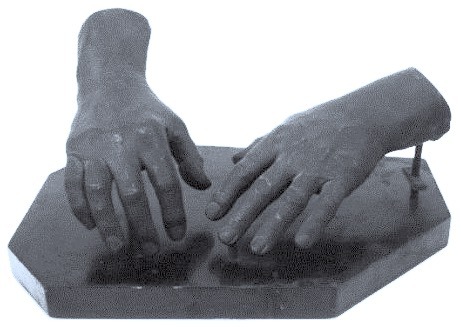
…every movement should tell, every action should achieve something. A manipulation, if it requires to be carried out, should not be half done and hesitatingly done. It should be deliberate, firm, intentional, and final. Infinite gentleness, scrupulous care, light handling, and purposeful, effective, quiet movements which are no more than a caress, are all necessary if an operation is to be the work of an artist, and not merely of a hewer of flesh.
Moynihan 1920
References
Biography
- OBITUARY. Lord Moynihan, K.C.M.G., C.B. The Lancet, 1936; 228(5898): 655–658
- Nécrologie. Lord Moynihan. La Presse médicale, 1936; 84: 1641
- Groves EWH. The Life and Work of Moynihan. BMJ, 1940; 1(4136): 601–606
- Groves EWH. The Life and Work of Moynihan: Part II. BMJ, 1940; 1(4137): 649–651
- Bateman D. Berkeley Moynihan, Surgeon. London, 1940
- Moynihan, Lord Berkeley: Papers and Case Books. AMI25
- Fallas R. Heart of a Lion and the Hands of a Lady: Lord Moynihan of Leeds. Leeds Museums and Galleries. 2017
- Biography: Moynihan, Sir Berkeley George Andrew, Lord Moynihan of Leeds (1865 – 1936). Plarr’s Lives of the Fellows Online. Royal College of Surgeons of England.
- Bibliography. Berkeley George Andrew Moynihan. World Cat
Eponymous terms
- Crile GW, Lower WE. The treatment of shock and its prevention through Anoci-Association. The Anoci-association. 1914
- Salati SA, al Khadi A. Murphy’s sign of cholecystitis– a brief revisit. Journal of Symptoms and Signs. 2012; 1(2): 53-56
- Kavitha Kamath B. An anatomical study of Moynihan’s hump of right hepatic artery and its surgical importance. Journal of the Anatomical Society of India 2016; 65(1): S65-S67
- Marano L et al. The unwanted third wheel in the Calot’s triangle: Incidence and surgical significance of caterpillar hump of right hepatic artery with a systematic review of the literature. J Minim Access Surg. 2019;15(3):185‐191.
- Hampson D. Moynihan sign. Eponym A Day. Instagram
- Cadogan M. Murphy’s sign. Eponym A Day. Instagram
[cite]

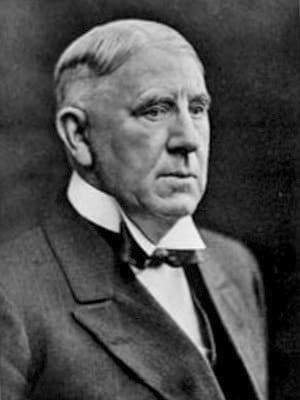
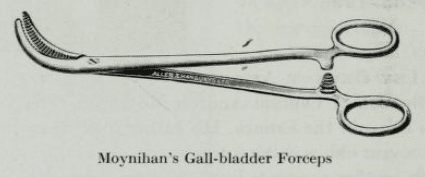
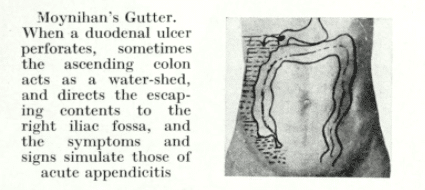
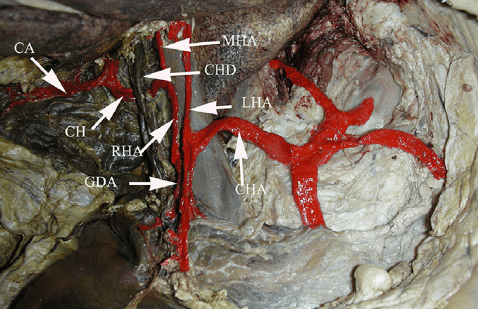

Hello
Sarah Firth a great aunt of mine was badly burned on her throat and chest at age 11 in 1920. A rich Lady in her home town of Halifax referred her to Lord Moynihan and paid £1000 for her surgery. My family believe that she was one of the first people to have plastic surgery and that her case was in the National newspapers. She accompanied the surgeon on a number of visits to other hospitals to demonstrate the success of the surgery.
Is there evidence that the Lord played a part in this surgery?
Regards
David Firth